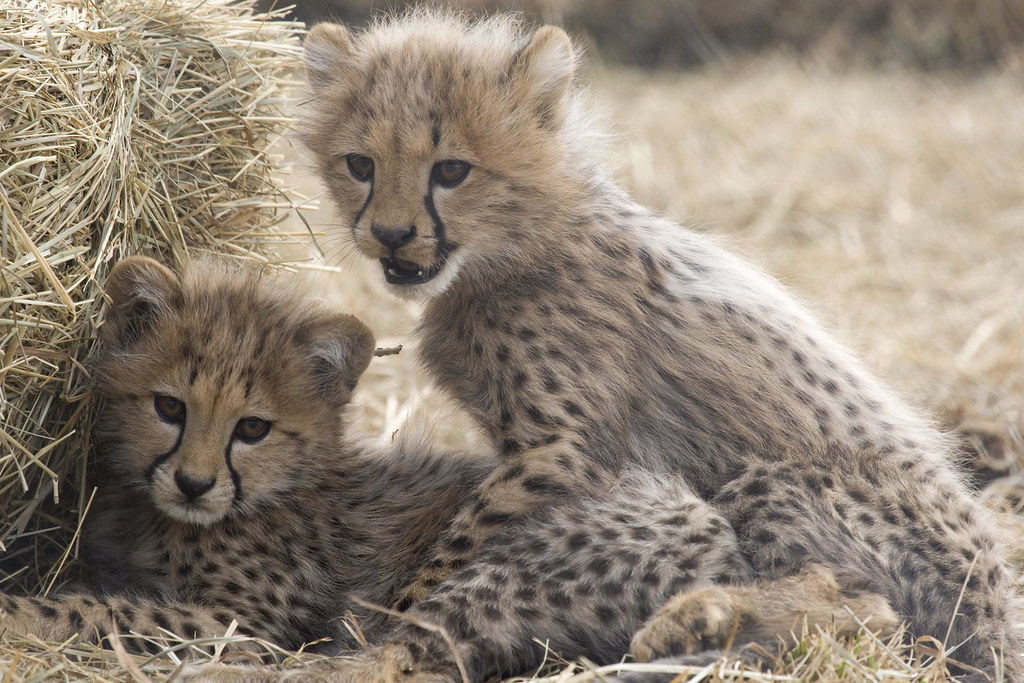#Phylum: Chordata
Video
National Zoo's Cheetah Cubs Go Outside for the First Time by Smithsonian's National Zoo
Via Flickr:
#Species: jubatus#Genus: Acinonyx#Family: Felidae#Order: Carnivora#Class: Mammalia#Phylum: Chordata#Kingdom: Animalia#Cubs#SCBI#CRC#Front Royal#VA#USA#Smithsonian Conservation Biology Institute#National Zoo#cheetah cubs#cheetah#Zazi#Amani#cross-foster#flickr
15 notes
·
View notes
Text
Another puppy Katie vid!!!
#katie may#katie#Videos#phylum: chordata#Class: Mammalia#Order: Carnivora#Family: Canidae#Genus: Canis#Canis familiaris#australian shepherds#blue heelers#herding dogs#working dogs#dogs#mammals#farm animals#my pets
4 notes
·
View notes
Note

Since you mentioned you want pictures of chordates
I love this tunicate, I wish it had fit into the graphic for the poll 😭 Chordata propaganda!
182 notes
·
View notes
Text
WAR AND HATE ON PLANET EARTH
WELCOME TO THE PHYLUM PHIGHT
A BRACKET WHERE THE 37 KNOWN PHYLA OF ANIMALS (extant and otherwise) WILL BATTLE TO THE DEATH. ONLY ONE MAY BE CROWNED CHAMPION-- AND ASCEND TO THE STATUS OF KINGDOM (i have this power)
WHO WILL IT BE? THE CHORDATES, CONTAINING EVERY KNOWN VERTEBRATE INCLUDING YOU AND ME? I FEEL LIKE THAT'S A BIAS. MAYBE THE HUMBLE TARDIGRADES, THE INTERNET'S FAVOURITE EXTREMOPHILES? OR WILL IT BE THE PENIS WORMS? I FEEL LIKE IT'S GONNA BE THE PENIS WORMS.
TOURNAMENT STRUCTURE:

ok ditching allcaps now <3
round 0
preliminary face-off between the odd phellas. lasting one (1) week to give bitches time to mobilise
protoarticulata VS rhombozoa
2. phoronida VS vetulicolia
3. petalonamae VS xenacoelomorpha
4. porifera VS rotifera
5. platyhelminthes VS saccorhytida
round 1
all round 1 poll-batches will last one (1) day because dear god there are so many of them. there will however be a cooldown of like, a couple days or something between batches because i am but one man
batch 1 - BATCH TO THE DEATH
6. priapulida VS winner of 1
7. annelida VS chaetognatha
8. trilobozoa VS micrognathozoa
9. bryozoa VS lorcifera
batch 2 - THE BATCHENING
10. tardigrada VS winner of 2
11. brachiopoda VS gastrotricha
12. mollusca VS winner of 3
13. nematomorpha VS gnathostomulida

batch 3 - BATCHETFIELD HIGH
14. chordata VS winner of 4
15. archaecyatha VS cycliophora
16. nematoda VS nemertea
17. ctenophora VS kinohyncha
batch 4 - I HAVE RUN OUT OF BATCH PUNS
18. arthropoda VS winner of 5
19. agmata VS entoprocta
20. cnidaria VS onychophora
21. echinodermata VS hemichordata
round three wait and see!!!
this bracket doesn't require nominations, as the candidates are already set out all nicey for us by Science. how cool of them. Now we make them beat each other senseless for our sick amusement :)
HOWEVER please send asks, suggest representative species or images to make sure we see them at their best, send propaganda/fun facts youd like the filthy electorate to know before they condemn your fav to the deepest most basal pits of taxonomic superhell. lets all get to know the Beasts together. Before we make them fight to the death.
-mod riz (he/him)

ROUND 0 START: APRIL 10TH
#phylum phight#phylum-phight-tourney#tumblr tournament#taxonomy#tumblr polls#tournament#poll tournament#animal tournament#biology#cnidaria#bryozoa#chordata#arthropod#echinoderm#molluscs
32 notes
·
View notes
Text
it’s been taking a lot more energy for me to open up jellyfish studies lately but um. I would like to meekly say that
a) Box Jellyfish seem to be the most physiologically “developed” out of any jellyfish (not including tunicates / salps. They freak me out)
b) Scyphozoan jellyfish seem to be in the middle. I’m waiting for the day the scientific community finally decides that Coronatae gets to be it’s OWN class so us crown jelly fans can clown on the silly noncoronate jellies. I’m tired of crowns being excluded from subclass Discomedusae, this needs to change
c) Hydrozoan jellyfish seem to be the simplest, having the simplest sensory structures (occeli/seeing structures and statoliths/orientation structures are separate instead of together in Rhophalia, like the first two jellies).
d) I’m really rooting for crown jellies, actually. They’re one of the most ancient jellyfish that we have record of so I think we should show them more respect
(Source: Myself, Lisa-Ann Gershwin’s Jellyfish Book, Wikipedia, and my friend @plasmagruntcalvin who gives me a lot of jellyfish fossils even though he doesn’t have to <3)
#no im not writing this with Momoka holding me at gunpoint wdym hahaaaa /j#mun rambles#jellyfish#tunicates are in phylum chordata btw (same as us actually)#they have a primitive brain (ganglion) and a primitive backbone#because OF COURSE they do GOD
16 notes
·
View notes
Text
continually fascinated by the variety of life on earth, continually frustrated by the lack of attention given to anything that isn't a vertebrate animal
#damn human bias...#i think about this so much but doing a botany internship this summer has really hammered it in#how can i have learned every class in chordata and every phylum in animalia by high school#and never even touched on taxa in ANY OTHER KINGDOM since#im mad im gonna go work on memorizing major phyla in plantae so i wont be so mad#(obvs the goal is to get through each kingdom but gotta start somewhere)#original
3 notes
·
View notes
Text

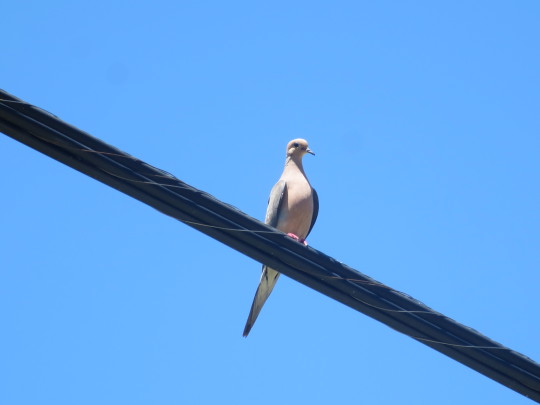


[ID: Four photographs of a mourning dove sitting on a telephone wire, with a cloudless blue sky behind it, shown from four different angles. The mourning dove has a tan breast and grey wings, with bright orange feet. Its tail is long and pointed, its beak is flat, and its black eyes are large and round. End ID.]
Observation by nonbinary-naturalist (aka me!)
Finally found a mourning dove that didn't immdiately fly away once I started trying to take pictures! :)
#iNaturalist#mourning dove#zenaida#zenaida macroura#doves#pigeons and doves#Columbidae#Columbiformes#birds#aves#Subphylum Vertebrata#Phylum Chordata#Kingdom Animalia#yes I am gonna start including all the branches so I can memorize them lol#described images
17 notes
·
View notes
Text
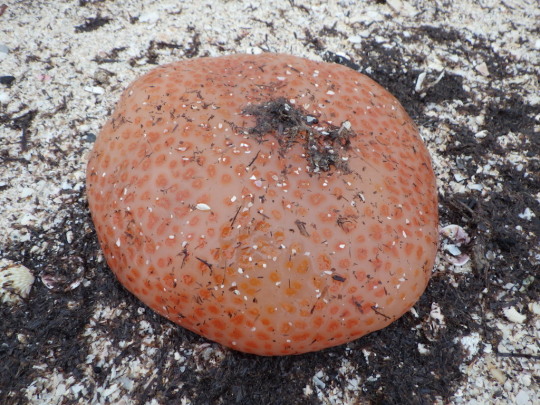
When you think “animals” think of this tunicate, Aplidium stellatum, the Atlantic Sea Pork. It’s found in shallow water on the US Atlantic coast where it often washes onto the beaches after storms. When alive it is red, pink, or orange, but quickly bleaches to a gray-white on death. It is colonial and made of many individual zooids.
Photo by joemdo
2 notes
·
View notes
Video
Scrub Jay by Lutfi Shedraway
Via Flickr:
It is very rare since I went out to shoot birds. Catching few birds and taken photos made this day of shooting a fun day. Scrub Jay is a tiny bird, about 10 inches in length, and it only weighs about 80 grams. It is native to the State of Florida.
#Kingdom:#Animalia#Phylum:#Chordata#Class:#Aves#Order:#Passeriformes#Family:#Corvidae#Genus:#Cyanocitta#Species:#C.#cristata#Blue#Jay#Florida#Birds#Sky#flickr
0 notes
Video
African Lion by Smithsonian's National Zoo
Via Flickr:
Photo credit: Mehgan Murphy, Smithsonian's National Zoo
#Species: leo#Genus: Panthera#Family: Felidae#Order: Carnivora#Class: Mammalia#Phylum: Chordata#Kingdom: Animalia#cub#baby#Luke#Washington#DC#USA#flickr
25 notes
·
View notes
Text

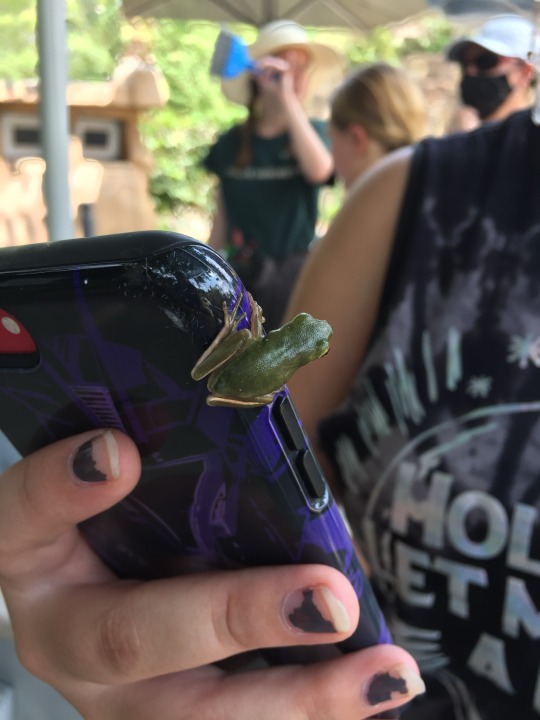


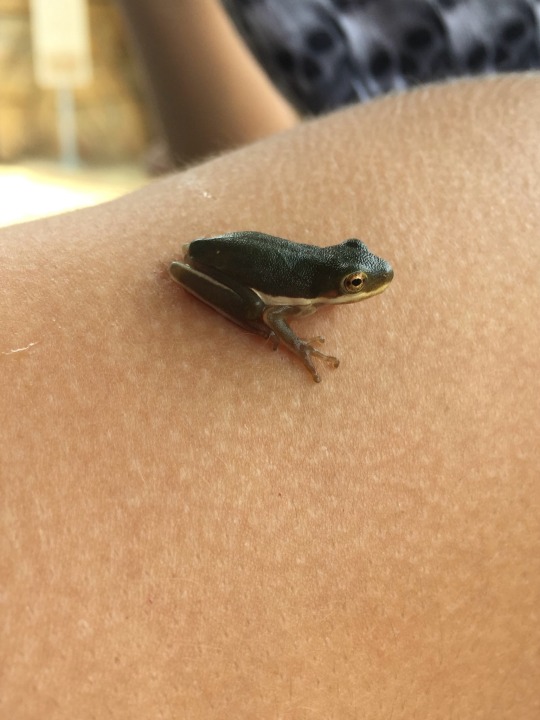
A cute Green Treefrog!
#Phylum: Chordata#Class: Amphibia#Order: Anura#Family: Hylidae#Genus: Hyla#Hyla cinerea#Green Treefrogs#Green Tree Frogs#Treefrogs#Tree frogs#Frogs#Amphibians
3 notes
·
View notes
Text
Phylum Round 3
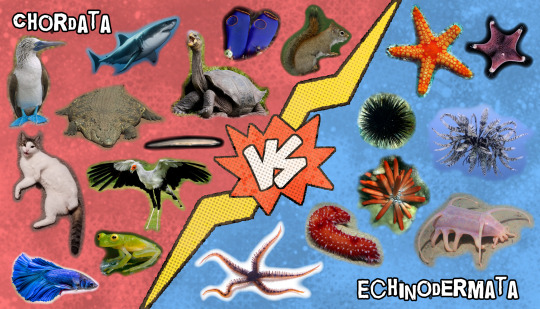
Chordata: All animals with a backbone (Vertebrata), but also some invertebrates. Chordata includes fish, birds, mammals, reptiles, and amphibians, but also sea squirts and lancelets. All Chordates have a notochord (supportive rod-like structure), a hollow dorsal nerve cord, pharyngeal slits (for filter feeding/breathing), a post-anal tail, and an endostyle (feeding organ) or thyroid (hormonal gland). Interestingly, many Chordates have overcome the need to raise their young in water by laying shelled eggs or carrying young within the womb. Fur, feathers, and scales are all unique adaptations found within Chordata. This phylum exhibits remarkable diversity overall.
Echinodermata: Sea urchins, sea stars, sea cucumbers, brittle stars, and feather stars. This widespread phylum can be found near every continent, including Antarctica, where they are particularly dominant. They are distinctive for their radially symmetrical body and skeleton located between the outer skin and inner body cavity. They move by hydraulic power using a "water vascular system" which pumps water throughout their body. Hundreds of tube feet extend and retract using this system, allowing them to crawl on the seafloor. These organisms play important roles in the food chain of their habitats, like sea urchins grazing in kelp forests.
#chordata#echinodermata#animal bracket#tumblr bracket#bracket tournament#poll bracket#phylum round 3#phylum
110 notes
·
View notes
Photo


AVNJ on youtube is having a invent a fish contest so I made the False Orca Shark!
Here’s the bio I wrote for this dude:
Kingdom: Animalia
Phylum: Chordata
Class: Chondrichthyes
Order: Orectolobiformes
Family: Lucemaculidae
Genus: Occisornus
Species: O. falsus
The false orca shark (Occisornus falsus) is a slow-moving, bottom feeding carpet shark that feeds on mostly sea grass and detritus. False orcas live in tropical epipelagic waters. It ranges in size from 16-23 ft long, making it one of the largest extant shark species, behind the whale shark and basking shark. It is also comparable in size to a small orca whale, which it imitates in appearance and behavior. Evidence suggests that the false orca mimics the orca whale as a defense from predators. The false orca’s other defenses from predators include their large size, and their tendency group in schools of 2-8 individuals. Though theses schools look similar to a pod of orcas, their social dynamics are much simpler. The false orca feeds by sucking plants and decomposing organic materials from the sea floor into its downward facing mouth. It has sensitive barbels that can detect food through touch and chemoreception. False orcas are very gentle and rarely, if ever, attack humans.
4K notes
·
View notes
Text
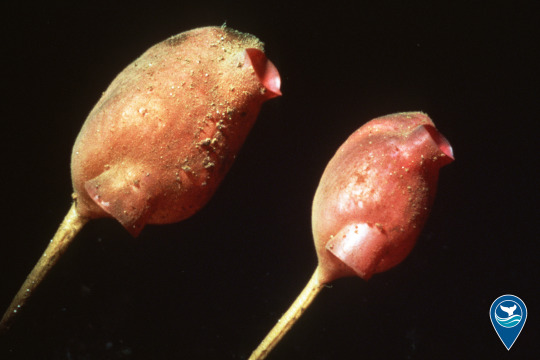
Haters gonna hate, hate, hate, hate, hate...
And potatoes gonna potate, tate, tate, tate, tate...
Stalked tunicates (Boltenia ovifera), commonly referred to as “sea potatoes,” are marine invertebrates that might be mistaken for plants due to their stationary appearance. Found in Arctic and North Atlantic waters, these animals belong to the Phylum Chordata, which makes them a primitive relative of vertebrates. Stalked tunicates, like other types of tunicates or “sea squirts” are filter feeders that pull water through their body (tunic) using a system of inhalant and exhalant siphons. This particular tunicate species is secured to the bottom of the sea by means of a long stalk.
📸: Kevin McCarthy (2022 Get Into Your Sanctuary Photo Contest submission)
100 notes
·
View notes
Note
stop salp slander 2023 (please they're trying their best)
Actually no salps freak me out to no end.
👉👈.
It's less like Salp slander and more like, me spreading the truth about salps
#I don't CARE if notochords aren't real spinal chords THEY SHOULDN'T BE THERE#AND THEY SHOULDN'T BE IN THE SAME PHYLUM AS US!! EW EW EWWW!!!#Get out of Chordata before you even TALK to me !! Yucky Salp#Salpin salps#ask#mun rambles#jellyfish#tunicates#Only putting this in the jellyfish tags because UNFORTUNATELY I include tunicates in my definition of jellies
11 notes
·
View notes
Text

Fanart for a river otter
[ID: a digital drawing of a river otter jumping towards the left. She's colored in blue and cream. There are other sketches of the otter, one in a drawn post-it and the other one is above a photo of a ticket, this one's colored in orange. There's a chart in clear blue that lists the taxonomy for this genus in Spanish, translating to: Kingdom: Animalia, Phylum: Chordata, Class: Mammalia, Order: Carnivora, Suborder: Caniformia, Family: Mustelidae, Subfamily: Lutrinae (this word is circled in red), Genus: Lontra. End ID]
#irbis draws#art#digital art#animal art#otter#river otter#mustelidae#mustelids#animal artist#animal drawing#the sketches were scanned from a drawing session i had at the zoo :>#this is fanart for the little otter that was there
71 notes
·
View notes
